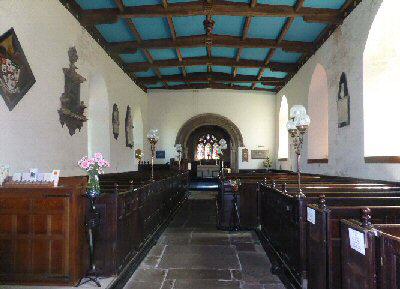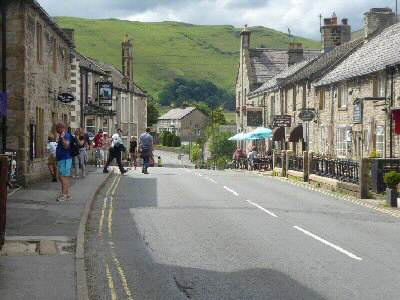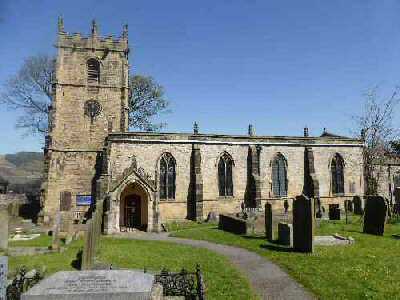CASTLETON
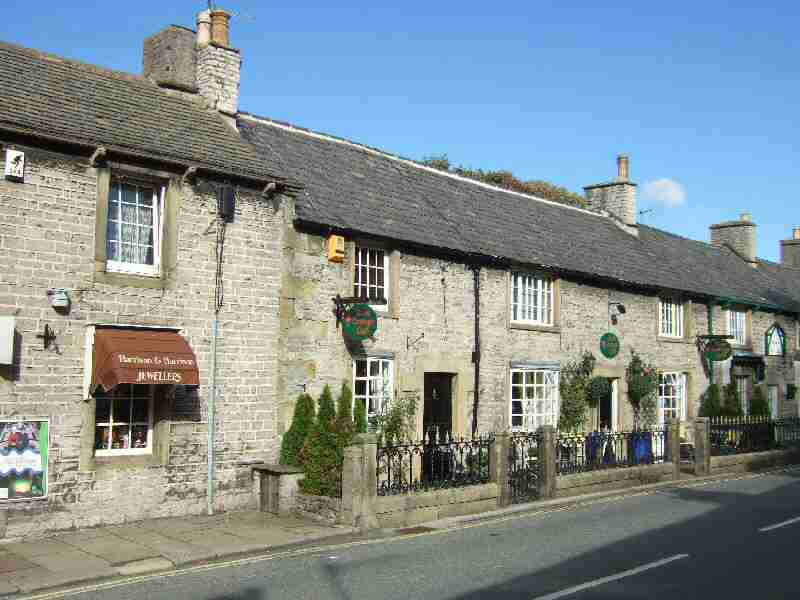
PLAN YOUR VISIT
Location: Castleton is on the A6187 Hope Valley Road (SK150829)
Visit: The most spectacular collection of caverns in the country. Climb the path to Peveril Castle, which towers up above the village. Enjoy the state-of-the-art Museum and Information Centre, or browse the shops and admire the magnificent scenery.
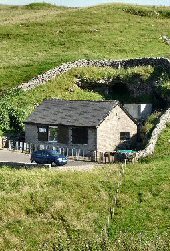
Refreshments: The village has several pubs, restaurants, and cafes to suit all tastes.
Walk: A fantastic walk with magnificent views, a Norman Castle, four of Europe’s most spectacular caverns and a historic village. Cave Dale is one of the most beautiful parts of Castleton, with cliffs rising almost perpendicular at the start of the walk and Peveril Castle towering above. Winnats Pass is one of the most impressive features of Derbyshire limestone country, with steep, craggy sides rising on either side of the road. Leaving the top of the Pass behind, the walk visits Blue John Cavern, Treak Cliff Cavern and Speedwell Cavern in succession before returning to Castleton by a scenic route and visiting Peak Cavern.
Special Places of Interest in the Locality: Edale, where the Nag’s Head Inn is the traditional starting point of the 270-mile Pennine Way Trail, as it winds its way north to the Scottish border at Kirk Yetholm. The scenery is magnificent and attracts visitors in large numbers at weekends and in the summer. – Kinder Scout is a moorland plateau and National Nature Reserve, much of which is owned and managed by the National Trust. The highest point in the Peak District National Park is part of the moor, 2,087 ft above sea level. – The pretty village of Hope is of great antiquity and was a centre of prehistoric trackways and later Roman Roads. The Romans’ most important fort in the Peak District was established at Navio, only one mile from Hope.
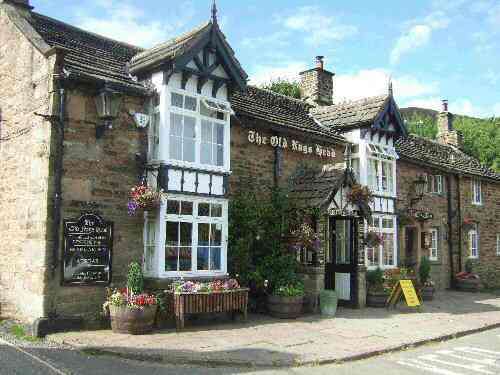
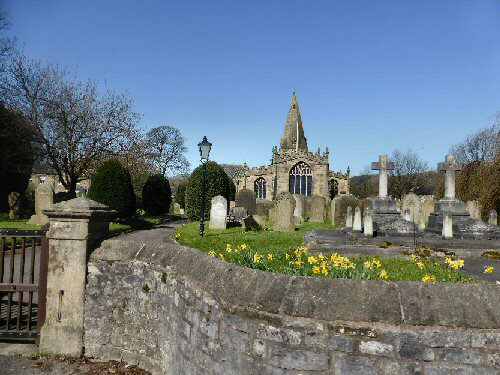
INTRODUCTION
Castleton, frequently called the gem of the Peak, is one of Britain’s most appealing villages. It is in a magnificent location with fantastic views in all directions. Approaching from the southwest, you descend into Castleton through the spectacular Winnats Pass, which has a forbidding appearance.
In 1758, the Pass was the scene of the horrific murder by five lead miners of a young couple journeying to Peak Forest to get married. The crime was never solved until the last surviving miner confessed on his deathbed. Later, the other four miners had also met terrible ends.
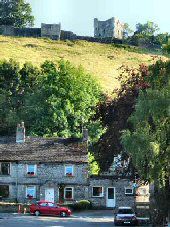
PEVERIL CASTLE
William Peverel originally built Peveril Castle. He was a favourite knight of William the Conqueror, who made him bailiff of the royal manors in northwestern Derbyshire. At that time, the Peak Forest was rich in game and minerals, and the castle was ideal for protecting both. However, King Henry II built the stone keep almost 100 years later, in 1176.
The castle ruins remain and can be viewed at close quarters by those prepared to climb the steep zigzag path to the castle, which Sir Walter Scott made famous in his novel Peveril of the Peak.
Under the castle’s protection, the village grew up in a distinct gridiron formation inside a protective Town Ditch, parts of which remain. In the field between the Visitor Centre and the Bulls Head, there is an information point containing details of the ditch’s origin.

CAVERNS
The village takes its name from the castle, ‘ton’ being of Anglo-Saxon origin and meaning ‘an enclosure’. It is most famous for its caverns, of which only Peak Cavern is an actual cave. Directly beneath the castle, the cave has a dramatic entrance that is said to be the largest in Britain.
It once contained houses, and there is still evidence of soot from the chimneys on the roof. There was even a 1794 report of an alehouse in the cave. For hundreds of years, rope-making took place, and some of the equipment remains.
Away from the village, Blue John Cavern is famous for its semi-precious stone, Speedwell Cavern for its half-mile subterranean boat trip and Treak Cliff Cavern for its stalactites. Blue John is unique to Castleton; pieces can be found worldwide, including at the White House and the Vatican.
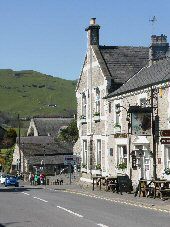
MAM TOR
Mam Tor is called the ‘Shivering Mountain’ because its soft shale layers between harder gritstone beds frequently crumble, causing landslips. These have been sufficiently severe to permanently close the former A625, which has been rerouted to Castleton through Winnats Pass. There is an Iron Age Fort near the summit of Mam Tor. By Treak Cliff is the Odin Mine, which in the 18th century produced large quantities of good quality lead ore; alongside is a crushing stone and circle, once used to dress the ore.
Cave Dale, hidden behind Peveril Castle, is the starting point of many walks. It is one of the most beautiful parts of Castleton, with cliffs rising almost perpendicular at the start of the walk, and the castle towering above. After reaching the head of the dale, the route becomes more open and has expansive views. From this point, it is only a short walk to Mam Tor and some of the most breathtaking views in the country.
THE VILLAGE
The village is a delightful cluster of old stone cottages that invite exploration. A sparkling little stream flowing from Peak Cavern takes you through the oldest part of Castleton. Along the main street, a wide variety of gift shops, cafes, and restaurants suit all tastes.
At Christmas, Castleton takes on a magical appeal with pretty lights, decorations and an array of Christmas trees, which attracts visitors from far and wide. There is nothing else quite like it anywhere in the country, so making a note in your diary to experience the festive magic of Christmas at Castleton is worthwhile. On weekends, Carol Services take place in the Peak and Treak Caverns, which are very popular, and visitors must book well in advance.
Castleton’s new state-of-the-art information centre opened to the public on 2 April 2004. The plans were drawn up following consultations with the local people and provide extensive community facilities. A museum has been incorporated into the building, which the Castleton Historical Society uses to feature a range of exhibitions about village life through the ages.
The history of St Edmund’s Church is closely linked to the castle. It was built in the 12th century and was known as the ‘Church of Peak Castle’. There is a Norman arch behind the pulpit, and it still retains box pews. A treasured possession is a valuable Breeches Bible of 1611.
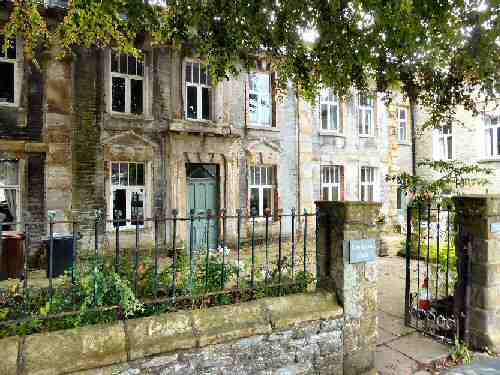
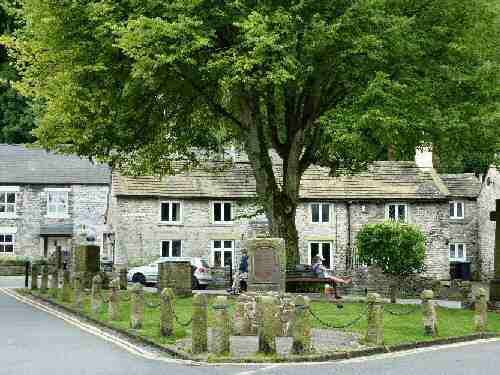
TEN FASCINATING FACTS ABOUT CASTLETON
1. If any village in Britain deserves the description of ‘unique,’ it is Castleton. It seems to fit the bill with its impressive location and virtually unrivalled variety of attractions.
2. It has been described as the ‘most educational of all English landscapes’, with a Norman Castle, an Iron Age fort, four show caverns, a shivering mountain, beautiful scenery, fossils and minerals, including the famous Blue John.
3. Lead mining was once an important industry in the area, and several old lead miners’ cottages still exist near Peak Cavern.
4. The railway’s arrival opened Hope Valley to tourists, and Castleton became the premier tourist hotspot.
5. Castleton Hall on Castle Street is an 18th-century Grade II-listed country hall. The Youth Hostels Association purchased the building in 1942 and operated it as Castleton Youth Hostel from 1943 until 2012. When a new hostel opened at Losehill Hall, the hall was sold.
6. The George Inn was once called ‘The Castle’, but the landlord took the name with him when he moved to the present ‘Castle’.
7. Castleton was once an important stopover for packhorses and, in later years, stagecoaches.
8. The Parish Church dates from the 12th century and stands on a low mound within the Town Ditch. A fortification that stretched from Peak Cavern to Cave Dale.
9. Since the 1920s, the primary mineral industry in the area has been cement. Hope Cement Works is closer to Hope, but its quarry is closer to Castleton.
10. The origins of the Oak Apple Day ceremony are uncertain, but it is frequently linked to the restoration of King Charles II, who escaped the Roundheads by hiding in an oak tree.
Castleton Caverns Walk
